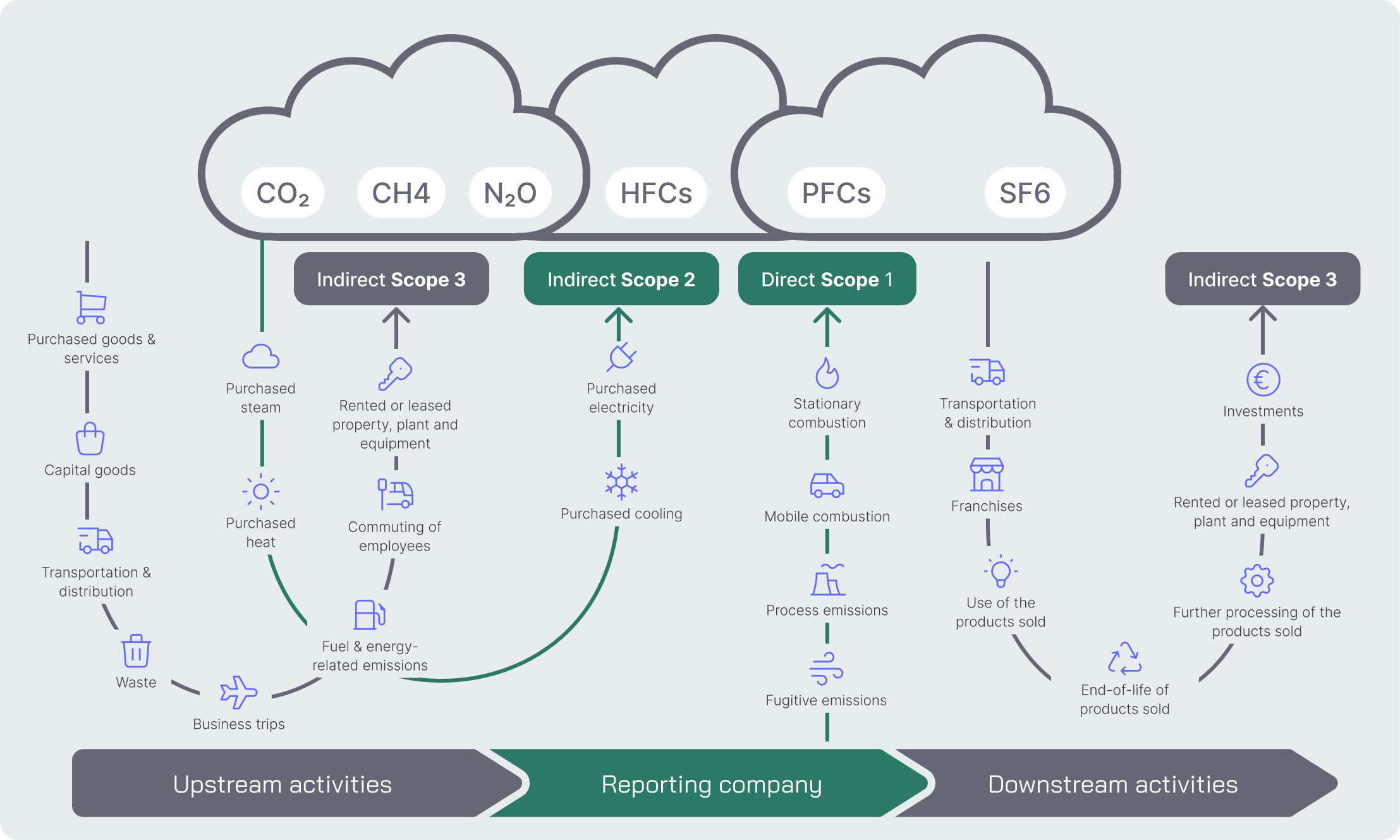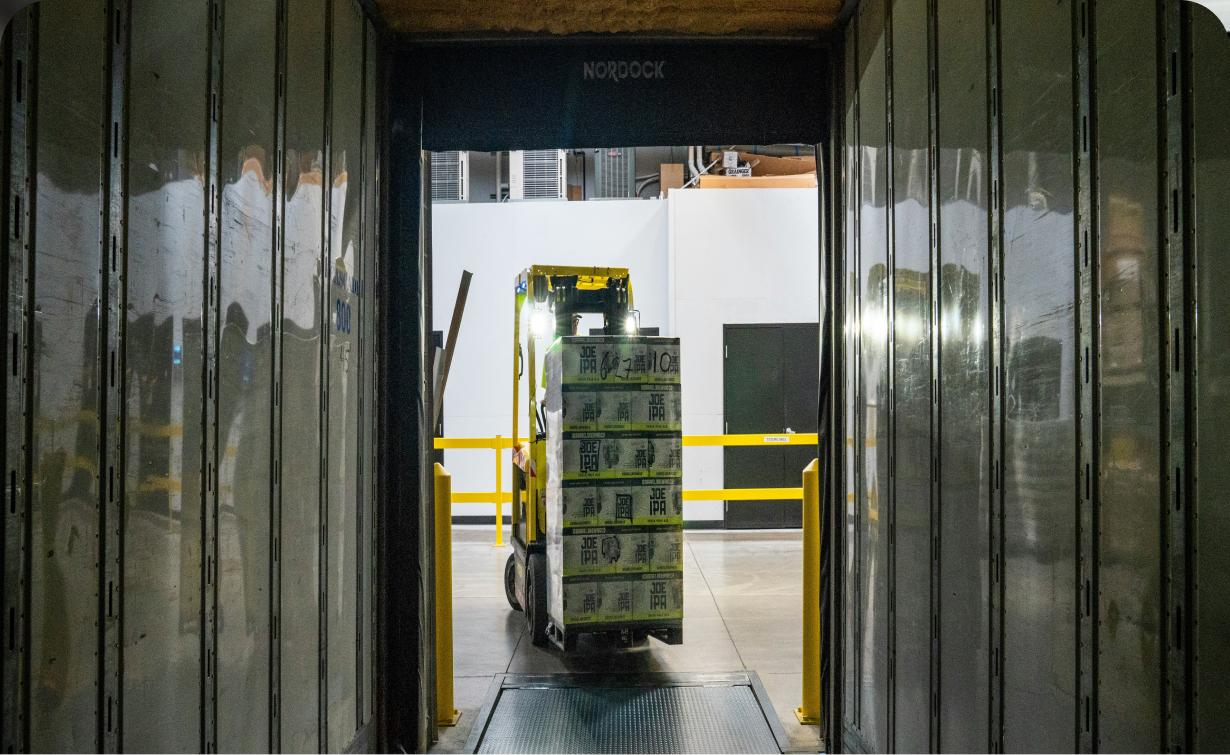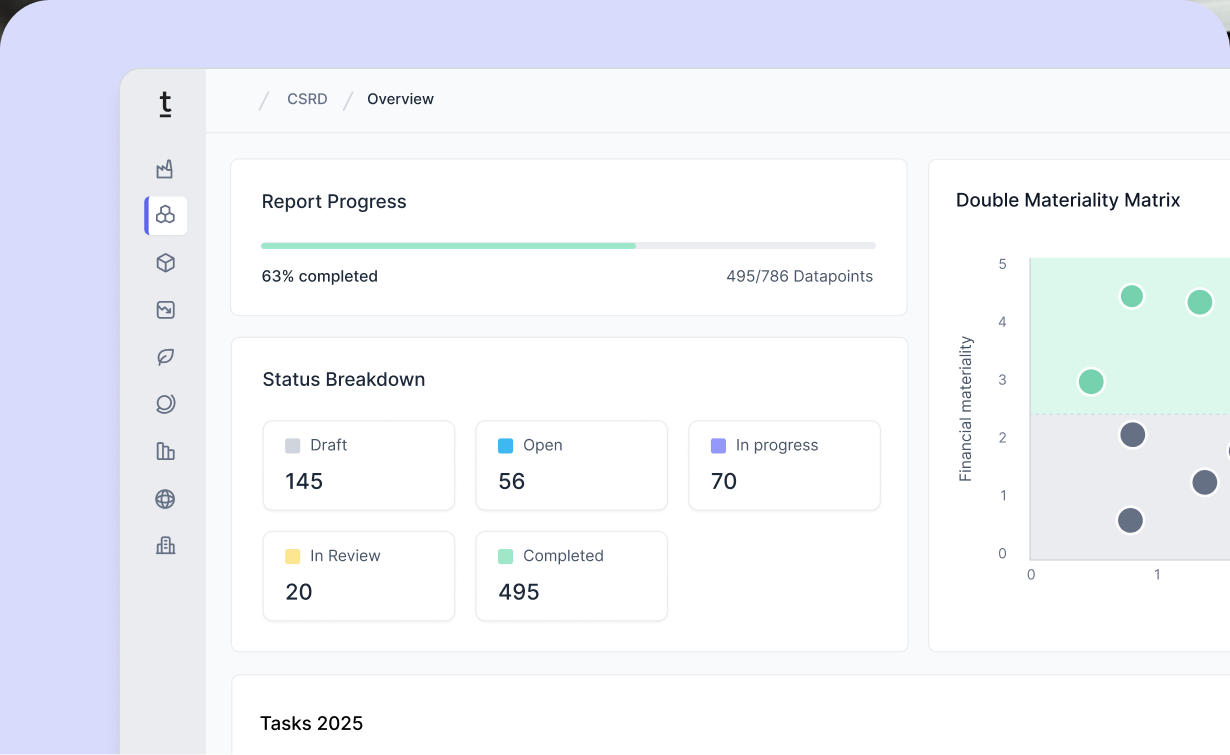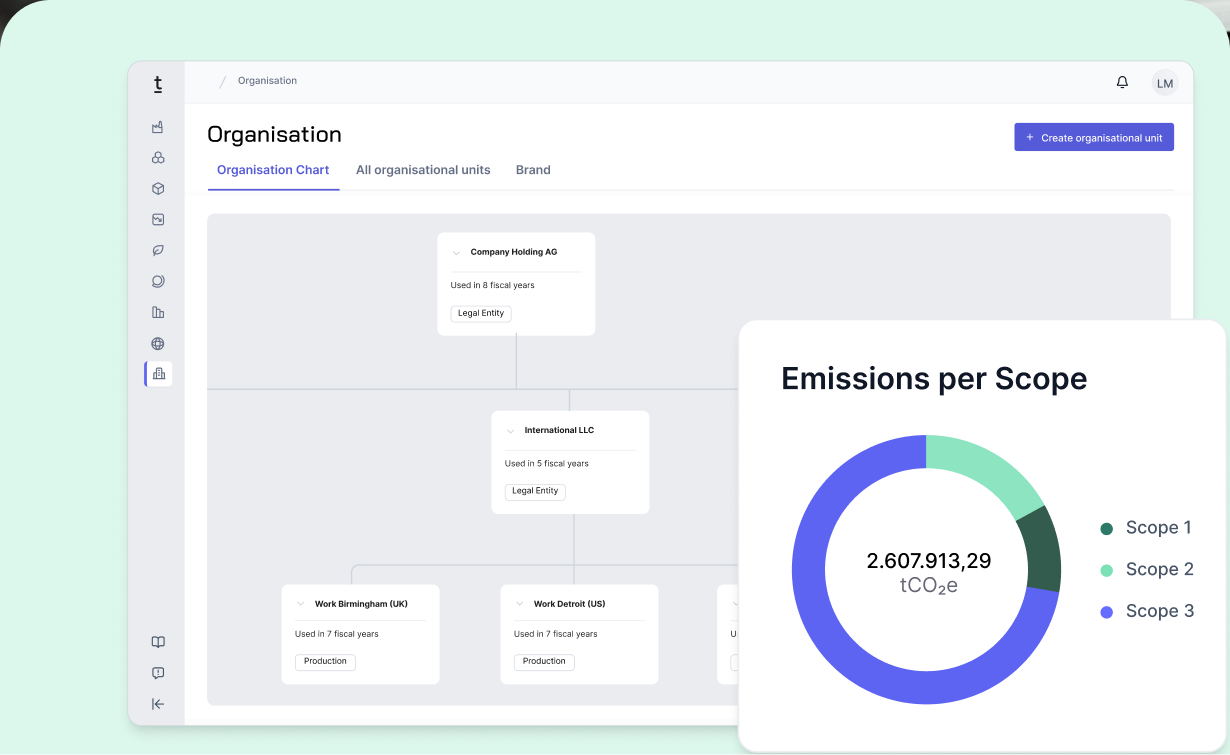Carbon Neutral vs. Net Zero: What industrial companies need to know

In this article, we highlight the key differences, regulatory frameworks, and practical action options – tailored for manufacturing companies in the DACH region.
Definitions & Distinction: Carbon Neutral vs. Net Zero
What does “Carbon Neutrality” mean?
Carbon neutrality means that the CO₂ emissions produced are offset through measures such as compensation. This typically involves certified climate protection projects, such as reforestation or renewable energy initiatives, which are intended to capture or avoid the same amount of CO₂.
The focus here is not on actually reducing emissions but on offsetting them—often while emissions continue. Companies can achieve mathematical climate neutrality without necessarily implementing operational changes.
What does “Net Zero” mean?
Net Zero goes significantly further: the goal is to reduce all greenhouse gas emissions (not just CO₂) across the entire value chain to nearly zero. This includes methane (CH₄), nitrous oxide (N₂O), and fluorinated gases, among others. Only residual emissions may ultimately be offset through certified compensation.
The Net Zero concept is based on deep emission reduction and transformation, not just offsetting. As a result, Net Zero is much more demanding in the long term - but also more credible.
The key difference: CO₂ vs. GHG
While carbon neutrality usually refers only to offsetting CO₂ emissions, Net Zero includes all relevant greenhouse gases (GHG) and requires their active avoidance and minimization.
In addition, Net Zero demands reductions across all Scopes (1-3) - including the supply chain (Scope 3)—which poses a particular challenge for industrial companies.
Regulatory perspective on Carbon Neutral vs. Net Zero
1. CSRD (Corporate Sustainability Reporting Directive)
The CSRD requires large companies in the EU to conduct comprehensive ESG reporting, including climate impacts across the entire value chain. The European Sustainability Reporting Standards (ESRS) call for clear emissions targets and progress tracking, covering Scope 1–3.
Implication: Companies relying solely on carbon neutrality through offsetting will not sufficiently meet CSRD requirements. Demonstrable emissions reductions with Net Zero targets are mandatory.
2. SBTi (Science Based Targets initiative)
The SBTi is the leading standard for science-based emissions reduction targets. Only companies with Net Zero goals focused on actual reductions receive validation.
Core requirement: At least 90–95% of all emissions must be reduced by 2050. Offsetting is permitted only for unavoidable residual emissions.
3. IPCC (Intergovernmental Panel on Climate Change)
The IPCC provides the scientific foundation for climate targets like Net Zero in its reports. It explicitly warns against “pure offset strategies” and calls for structural emissions reductions, particularly in the industrial sector.
4. EU Taxonomy
The EU Taxonomy requires companies to transparently demonstrate their environmental alignment. A climate-related economic activity must actively contribute to climate change mitigation—meaning active emissions reduction.
Scope 1–3: What must be measured and reduced
- Scope 1: Direct emissions from owned sources (e.g., company fleet, plant operations)
- Scope 2: Indirect emissions from purchased energy
- Scope 3: All other indirect emissions, e.g., from suppliers, business travel, product use

Net Zero requires a comprehensive reduction across all three scopes, whereas carbon neutrality often only addresses Scopes 1 and 2 - or is achieved solely through accounting-based offsetting.
Strategies & Measures: Carbon Neutral vs. Net Zero
The path to carbon neutrality: short-term offsetting
Many companies start their climate strategy with the goal of carbon neutrality, often as an entry point to decarbonization. The typical steps include:
- Measuring the carbon footprint (usually Scopes 1 and 2)
- Calculating total emissions
- Funding certified offset projects (e.g., reforestation, biogas, renewable energy)
- Declaring climate neutrality
This approach can be implemented quickly but is not sustainable from a regulatory perspective in the long term—especially under CSRD and SBTi requirements.
The path to Net Zero: structural reduction
Net Zero requires a systematic, data-driven transformation:
- Comprehensive carbon accounting (including Scope 3, e.g., supply chains, product use)
- Hotspot analysis: identifying where the most emissions occur
- Technical reduction measures: e.g., process optimization, switching to renewable energy, material substitution
- Engaging suppliers and requesting data
- Offsetting only the remaining emissions in a targeted and transparent way
Net Zero is therefore a multi-year strategic goal that fundamentally impacts the value chain and business model.
Carbon Offsets vs. Insetting
Criticism & Greenwashing: Why “Carbon Neutral” Is Viewed Critically
The term Carbon Neutral is not legally protected and is often used as a marketing label, even when no real emissions reduction occurs. Instead of transforming processes, companies may purchase offset certificates whose quality and impact are difficult to verify.
Key Criticisms:
- Focus on offsetting rather than actual reduction
- Questionable offsetting projects
- No contribution to structural transformation
Because of these issues, many standards such as the SBTi and the CSRD explicitly require that reduction must come before compensation. For companies that want to act credibly and remain compliant in the long term, Net Zero is unavoidable.
Recommendations for Manufacturing Companies
For businesses in sectors such as machinery, metalworking, or construction, the path to Net Zero is ambitious but increasingly necessary. At the same time, Carbon Neutrality can serve as a practical starting point to make initial progress visible.
When does each approach make sense?
Frequently Asked Questions (FAQ) on Carbon Neutral vs. Net Zero
What is the difference between Carbon Neutral and Net Zero?
Carbon Neutral refers to offsetting CO₂ emissions, typically through compensation. Net Zero requires the comprehensive reduction of all greenhouse gases (GHGs) across the entire value chain. Offsetting is allowed only for residual emissions.
Is Carbon Neutrality greenwashing?
Not necessarily. However, without a verifiable reduction strategy, the term loses credibility and fails to meet regulatory requirements such as CSRD or SBTi.
How should manufacturing companies get started effectively?
Begin with a solid carbon footprint assessment covering Scopes 1–3, identify emission hotspots, and set clear reduction targets — for example, using Tanso as a software partner.
What does the CSRD require regarding climate targets?
Companies must disclose specific, science-based reduction targets, including Scope 3, and document their progress. Offsetting alone is insufficient.
Is Net Zero the same as carbon neutrality?
No. Carbon neutrality focuses on offsetting emissions, whereas Net Zero prioritizes genuine reductions across all greenhouse gases.
What is the SBTi’s distinction between Net Zero and Carbon Neutral?
The SBTi recognizes only Net Zero targets with at least a 90–95% reduction as compliant. Carbon neutrality achieved solely through offsetting does not meet scientific criteria.
How does Net Zero differ from carbon-neutral construction?
Carbon-neutral construction typically refers to individual buildings and operational emissions. Net Zero covers the entire lifecycle — from material production to disposal and all relevant GHGs.
















































.avif)







.jpg)
.jpg)




















-p-800.webp.avif)
-min-p-800.webp.avif)






-p-800.webp.avif)

